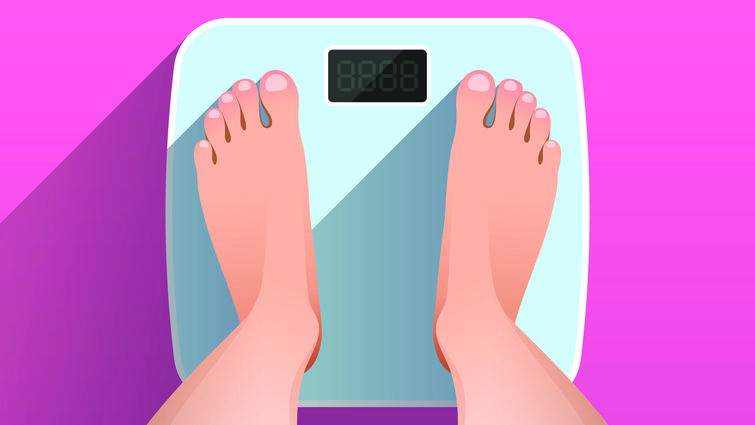
Scale
As early as April 2020, editorials and small pilot studies in the global medical literature predicted a flood of relapsing and new-onset eating disorders. This was an expected consequence of the COVID-19 pandemic and subsequent quarantine.
As a psychiatrist who specializes in treating patients with eating disorders, I witnessed patients who had clawed their way out of an eating disorder many years ago gradually beginning to fall back into the illness. Professionals, mothers, and students whom I have treated for years began to report increasingly disordered thoughts around food and weight that were magnified in isolation. Our patient volume at the Loma Linda University Behavioral Medicine Center Eating Disorders Partial Hospital Program grew by nearly 50% in the first two months of the pandemic and has continued to maintain this volume now as the pandemic stretches on.
Around the world, people suffering from eating disorders, including anorexia, bulimia, and binge eating disorder are reporting an increase in both their desires to restrict food intake and urges to use food as a means of emotional comfort. For others who have never been diagnosed with an eating disorder, patterns of disordered eating are reported by those seeking to lose the “Quarantine 19” gained over the past year.
What is it about this pandemic that causes so many people to lose control over their relationship with food?
Contributing Factors
For people with an eating disorder, and the professionals who treat them, it’s well known that these disorders are only somewhat about food. Often, disordered eating provides a means of feeling in control over external stress and internal emotional distress. Additionally, genetic and other biological factors play into the distorted thoughts that drive people to restrict meals, binge eat, and purge.
During the pandemic, the collective feeling of vulnerability and loss of control experienced around the world was mirrored by articles documenting a rise in mental health concerns. Cases of depression, anxiety, alcohol and substance use disorders, and PTSD began to climb globally. Those who were previously diagnosed with an eating disorder began to decline.
According to a study published in the International Journal of Eating Disorders, 30% of patients with bulimia and over 60% of patients with anorexia reported worsening of symptoms during the pandemic. Nearly 50% of these individuals were not receiving treatment of any kind.
Factors contributing to an increase in the number of patients with eating disorders during the pandemic include high stress, loneliness, negative emotional outlook, increased use of social media, body dissatisfaction, and concerns with food accessibility. For those with a tendency toward overeating and binge eating, a lack of other rewarding activities in life can elevate the reward associated with food.
More than anything, eating disorders thrive in isolation where fears can go unchecked. Driven by a fear of loss of control, people with eating disorders often willingly submit to a condition that eventually will take all control from them.
Taking Back Control
During the pandemic, here is a list of the top 10 things I have encouraged my patients who struggle with disordered eating to do:
Online
- Stick to online groups that specifically promote body positivity and consider taking a hiatus from or deleting apps that encourage a culture of body shaming.
- When on video conferences, put a sticky note on the screen to cover your own picture so that you are not inclined to “body check” (obsessively focus on features of your own body) throughout the meeting.
- See the National Eating Disorder Association website for virtual support groups, mentorship and education about eating disorders.
Support
- Reach out to family and ask to prepare and eat meals together rather than eating in isolation.
- After mealtimes and in the evenings, when more likely to engage in disordered eating, make a plan for activities with others for distraction (online game night, going on a brief walk with family).
Self-care
- Work on going to bed at a scheduled time each night, ensuring at least 7-8 hours of sleep.
- Create a schedule of healthy snacks and meals every few hours throughout the day to reduce the risk for binge eating.
Reflection
- Write a list of the things you like about your body, keeping in mind functional aspects (“my strong arms that carry my child,” or “my agile fingers on the guitar strings”).
- Write a list of the things about yourself that make you proud, completely unrelated to your body (“I am a good friend,” or “my art”).
- Write down positive body affirmations on small sticky notes and place them in locations most likely to body check, including on mirrors.
Seeking Help
Despite some treatment limitations during the pandemic, help exists. Telehealth visits allow a greater reach for mental healthcare, and on-site eating disorder treatment programs continue to operate across the country. Recognizing and responding to signs of an eating disorder is the first step in getting help.
If you or someone you care about is suffering from an eating disorder, a substance use disorder, or another mental illness, visit our behavioral health services website and learn more about how Loma Linda University Behavioral Medicine Center can help.
Request information on any behavioral health concerns, and one of our intake coordinators will contact you. If you or someone you know is in crisis now, seek help immediately. Call 1-800-273-TALK (8255) to reach a 24-hour crisis center or dial 911 for immediate assistance.
—Melissa Pereau, MD, is a medical director at Loma Linda University Behavioral Health
